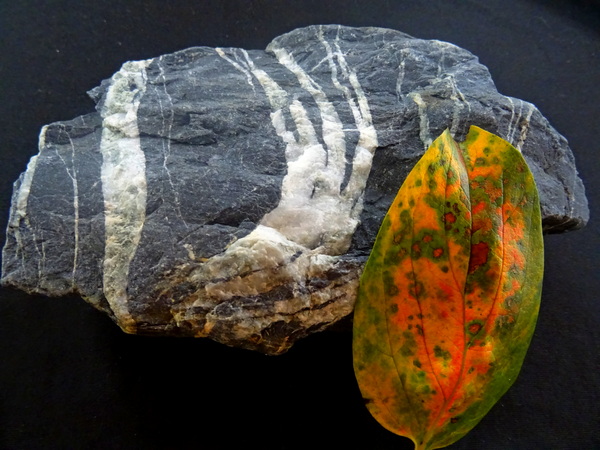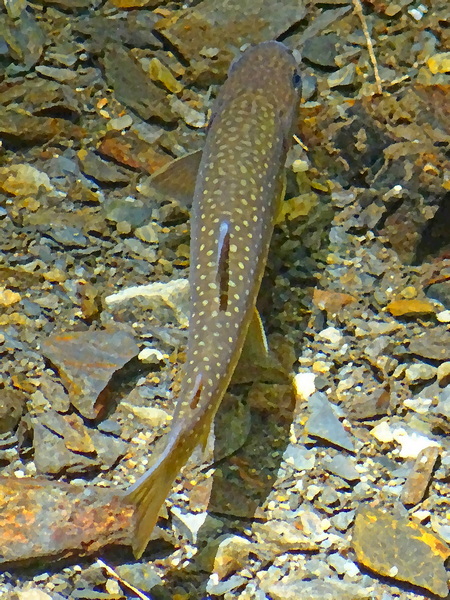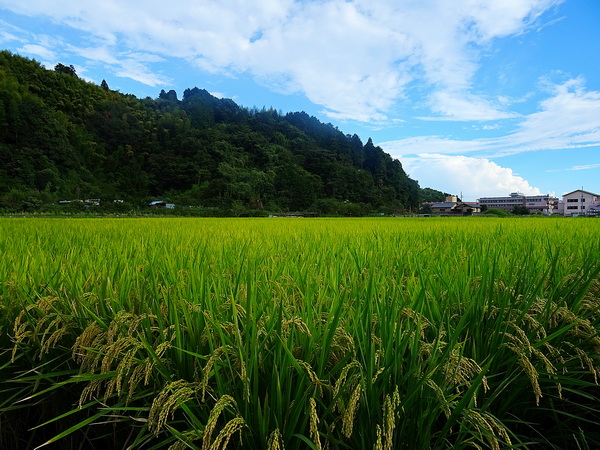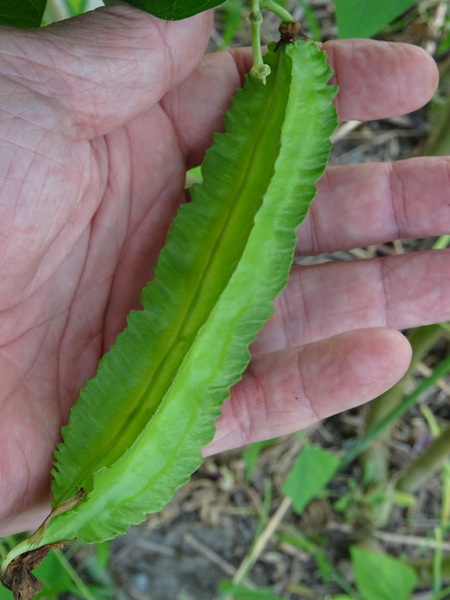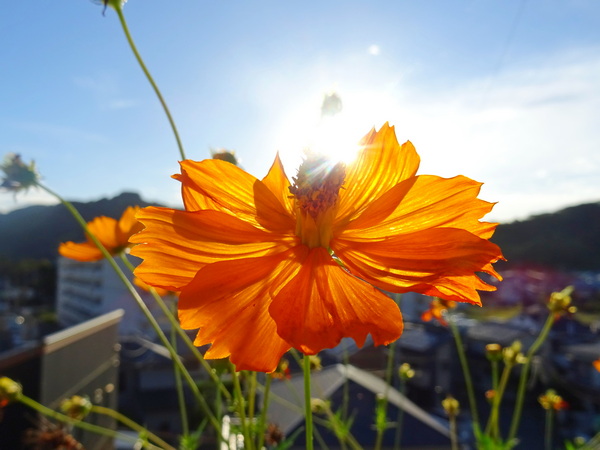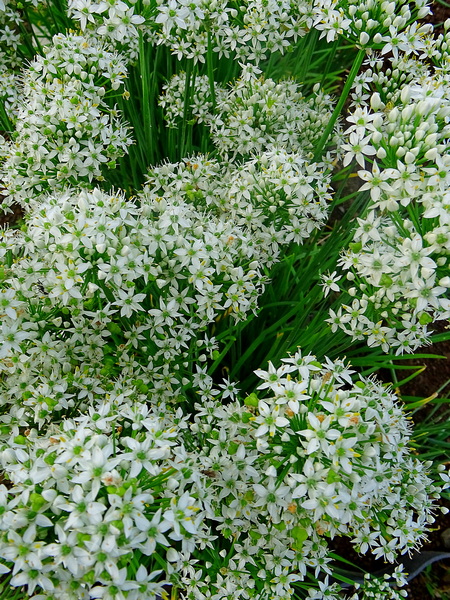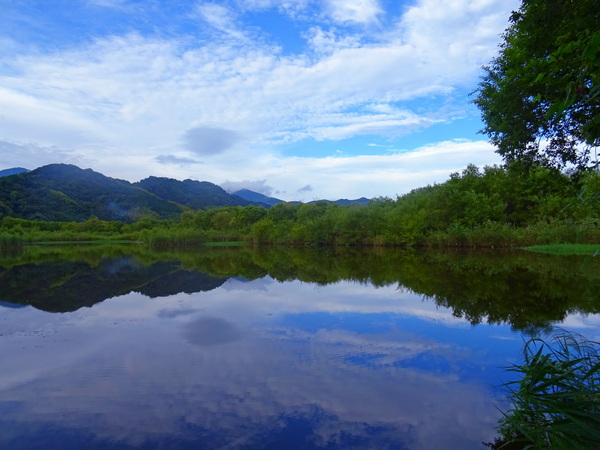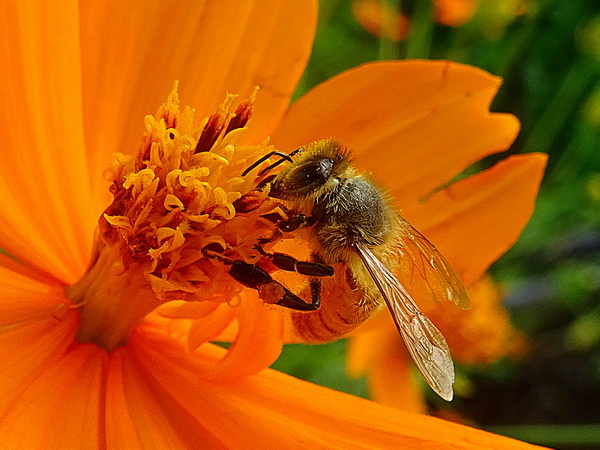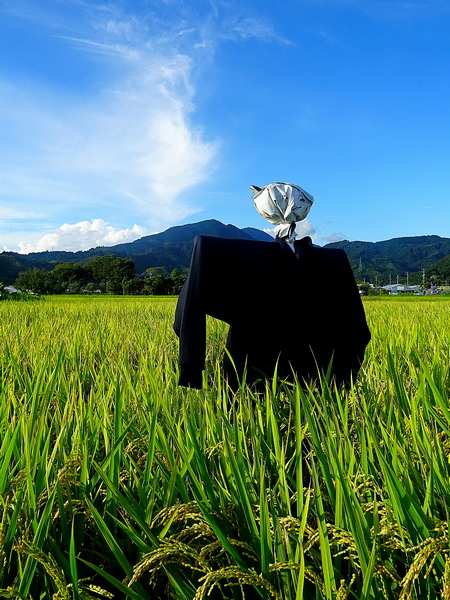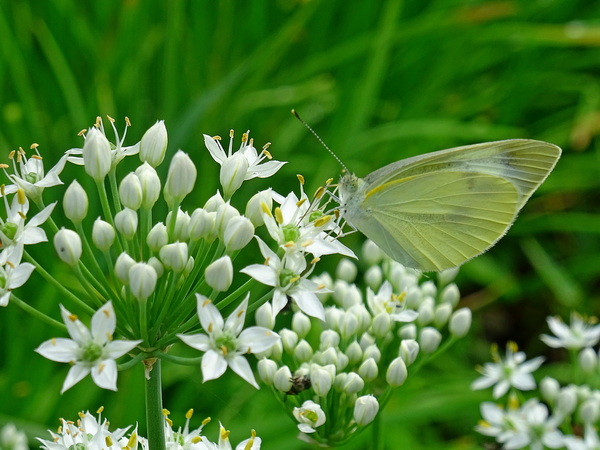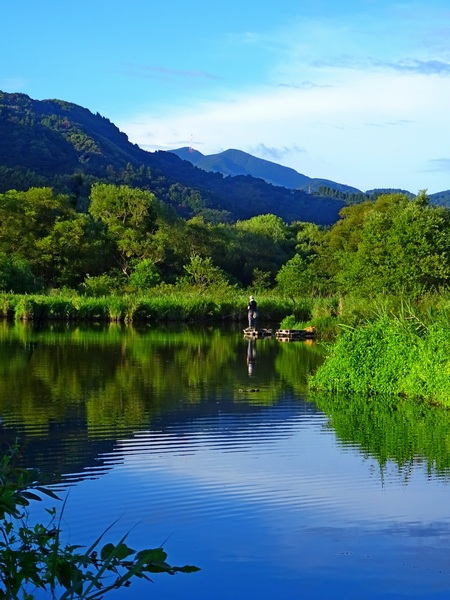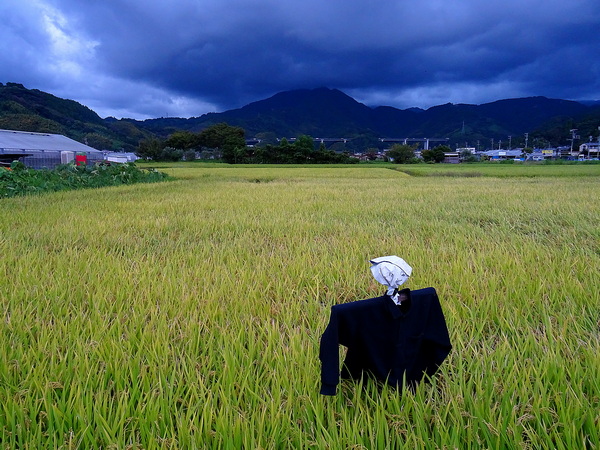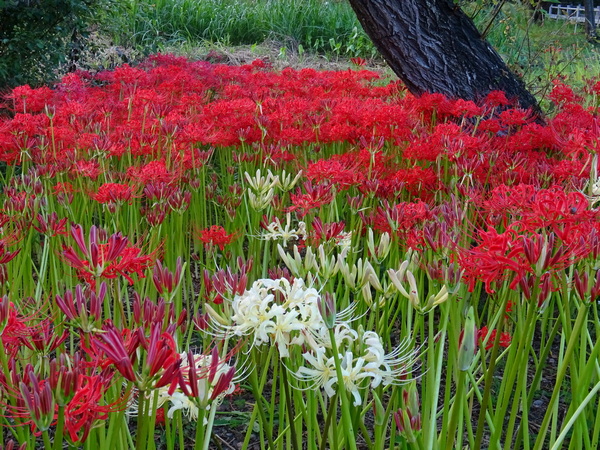
The autumnal equinox.
In my neighborhood at least, the August haze has dissipated, and the bright blues have returned. The rice has yellowed up. In the midst of the yellow and blue, the higanbana (spider lilies) have risen. The primary colors are meant to be looked at. To be felt. It’s a time when some (many?) folks recognize the lack of disconnect between the so-called “living” and the so-called “dead.”
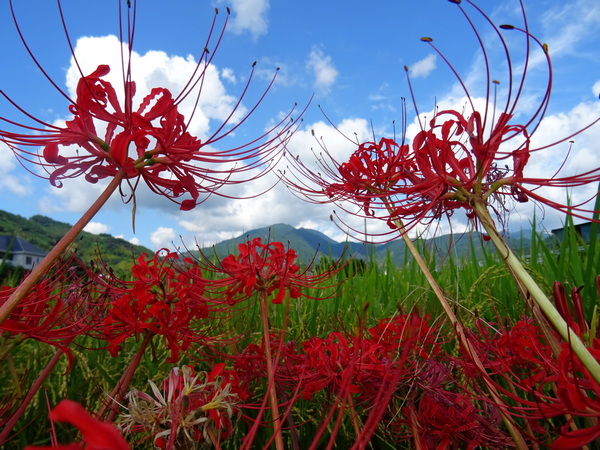
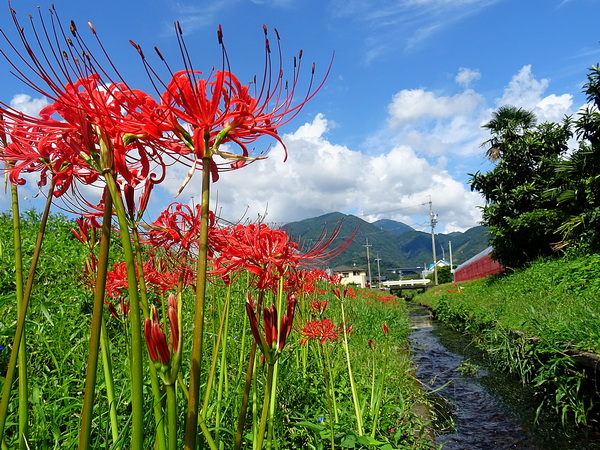
. . . the simple perception of natural forms is a delight. The influence of the forms and actions in nature, is so needful to man, that, in its lowest functions, it seems to lie on the confines of commodity and beauty. To the body and mind which have been cramped by noxious work or company, nature is medicinal and restores their tone. The tradesman, the attorney comes out of the din and craft of the street, and sees the sky and the woods, and is a man again. In the eternal calm, he finds himself. The health of the eye seems to demand a horizon. We are never tired, so long as we can see far enough.
“Nature” Ralph Waldo Emerson
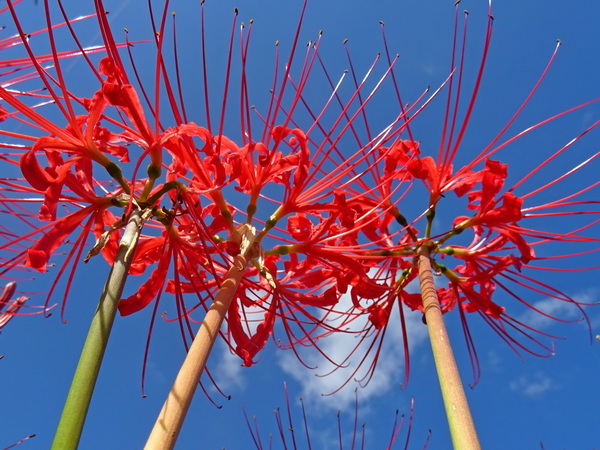
The nicknames for the spider lilies seem unlimited. But a few:
Hakabana (Grave Flower), Hebinohana (Snake Flower), Soshikibana (Funeral Flower), Kamisorabana (Razor Flower), Jikokubana (Hell Flower), Yureibana (Ghost Flower), Shibitobana (Dead Man Flower), Sutegobana (Foundling Flower).
For some people, these names might be offputting. For others (maybe those who don’t feel the disconnect), they might seem quite reasonable—even comforting.
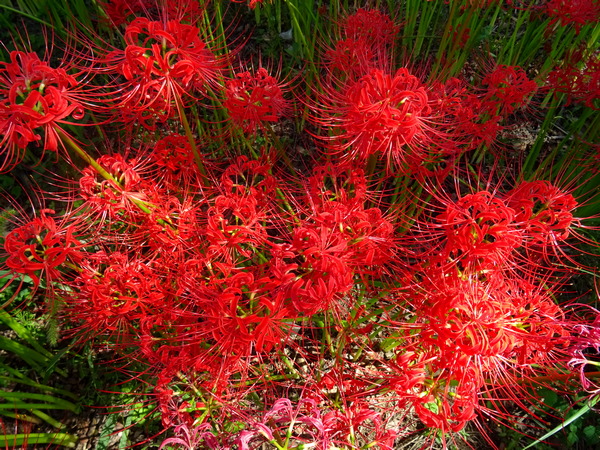
Many people long to see them bloom, but very few plant them in their own garden. Many people cut a few from a canal bank, or the edge of a rice field, and decorate a grave.
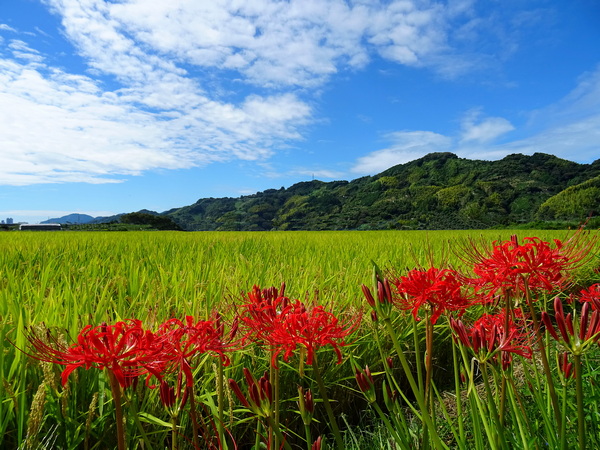
“When I meet someone,” the Dalai Lama said, returning to what was becoming an important theme, “I always try to relate to the person on the basic human level. On that level, I know that, just like me, he or she wishes to find happiness, to have fewer problems and less difficulty in their life. Whether I am speaking with one person, or whether I am giving a talk to a large group of people, I always see myself first and foremost as just another fellow human. That way, there is in fact no need for introduction. If, on the other hand, I relate to to others from the perspective of myself as someone different–a Buddhist, a Tibetan, and so on–I will then create walls to keep me apart from others. And if I relate to others, thinking that I am the Dalai Lama, I will create the basis for my own separation and loneliness. After all, there is only one Dalai Lama in the entire world. In contrast, if I see myself primarily in terms of myself as a fellow human, I will then have more than seven billion people who I can feel deep connection with. And this is wonderful, isn’t it? What do you need to fear or worry about when you have seven billion other people who are with you?”
The Book of Joy
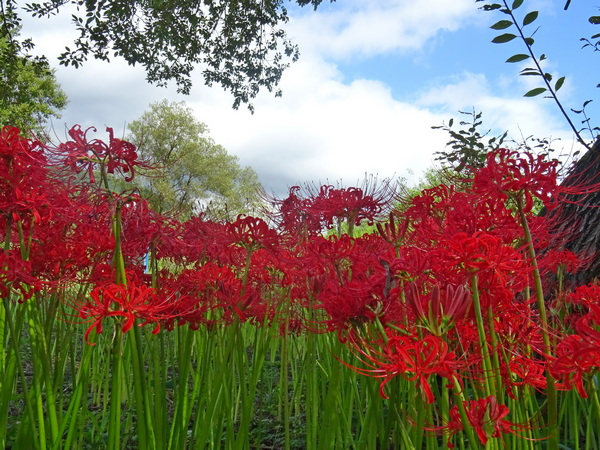
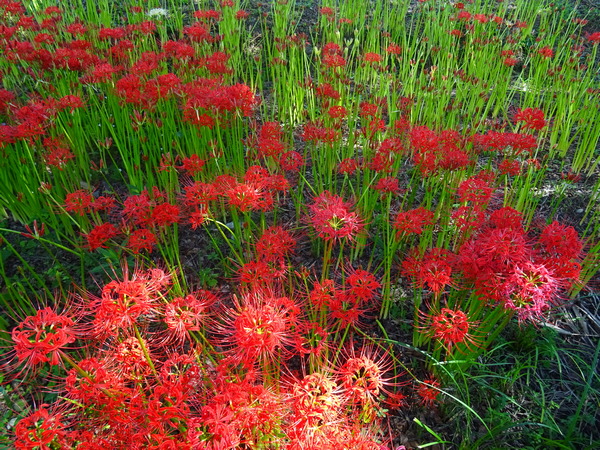
“Indeed the river is a perpetual gala, and boasts each month a new ornament.”
“Nature” Ralph Waldo Emerson
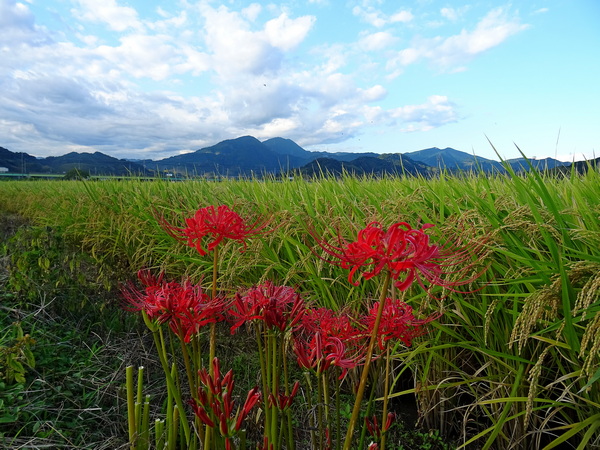
(from Persimmon Dreams: When you’ve got a spare moment, check out our music/nature videos on our “Persimmon Dreams” YouTube channel, or Steve’s books, When a Sissy Climbs a Mountain in May and Along the Same Street, available on Amazon, or directly from us. And if you enjoyed this post, consider sharing with others. Thank you!)
